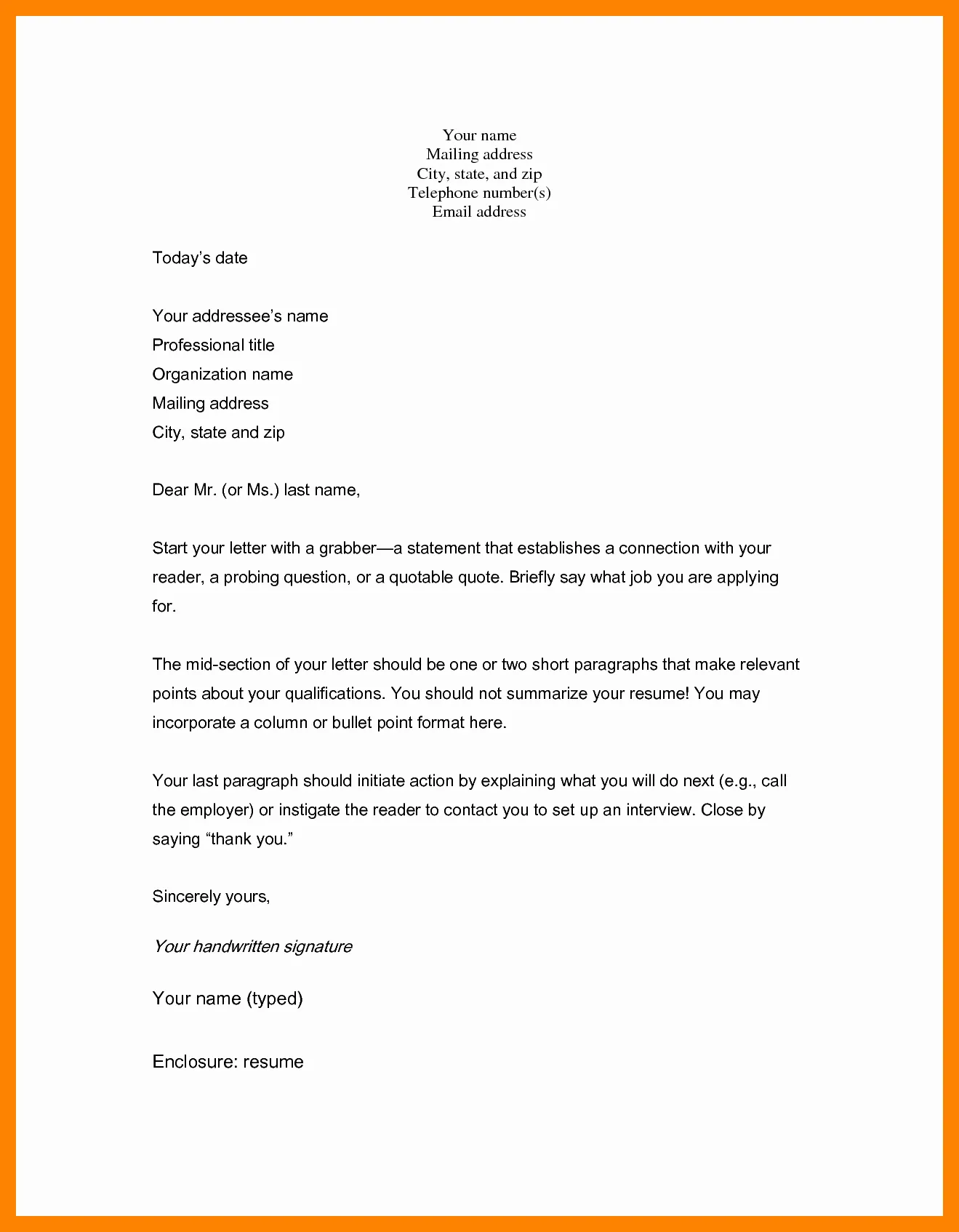Cover Letter Address No Name Overview
Crafting a compelling cover letter is a crucial step in the job application process. It’s your opportunity to showcase your personality, skills, and enthusiasm for the role. However, you might encounter a common challenge: not knowing the name of the hiring manager or the specific person you should address the letter to. This guide provides actionable strategies for navigating this situation, ensuring your cover letter makes a positive impression, even without a name. We’ll explore why addressing a cover letter to a specific individual is important, the best alternatives when a name is unavailable, and how to format your letter for maximum impact. This article will help you create a strong cover letter and make sure you don’t lose the opportunity you want.
Why Names Matter in Cover Letters
While it’s tempting to brush off the importance of a name in your cover letter, addressing it to a specific individual can significantly increase your chances of getting noticed. Personalization demonstrates that you’ve taken the time to research the company and role, showing genuine interest. It also signals that you’re attentive to detail and willing to go the extra mile, qualities that employers often seek in candidates. A cover letter is also a marketing tool; it is the first impression you give to your potential employer, and you want to make it count and stand out from the crowd. A well-addressed cover letter shows that you are professional, and it is one of the first steps in landing that all-important interview.
The Importance of Personalization

Personalization goes beyond simply including a name. It involves tailoring your letter to the specific company, role, and the individual you’re addressing. This might involve referencing specific projects, company values, or industry trends that resonate with the reader. By demonstrating that you’ve researched the company and understand its needs, you position yourself as a well-informed and genuinely interested candidate. A personalized cover letter indicates that you have a true desire to work at the company and that you didn’t just write a generic letter. It is an opportunity to show that you have done the necessary work.
Benefits of Addressing a Specific Person
Addressing your cover letter to a specific person offers several advantages. First, it shows you’ve taken the initiative to learn about the company and its team. Second, it increases the likelihood that your letter will be read by the relevant decision-maker. Third, it allows you to establish a more personal connection. For instance, a personalized cover letter will make it easier to follow up. You can directly address the person and reference a specific part of your cover letter that you discussed with them. This level of personalization shows a high level of dedication and organization that many employers look for in potential candidates.
Alternatives When You Can’t Find a Name
There are times when despite your best efforts, you’re unable to find the name of the hiring manager or the appropriate contact. In these situations, you can use alternative approaches that maintain professionalism while still showing you’ve put thought into your application. These methods are better than using a generic greeting, and they still show that you have researched the company and role. They also help you maintain a level of professionalism that a prospective employer would expect. It is important to avoid being too generic or impersonal in these cases.
Using Generic Greetings
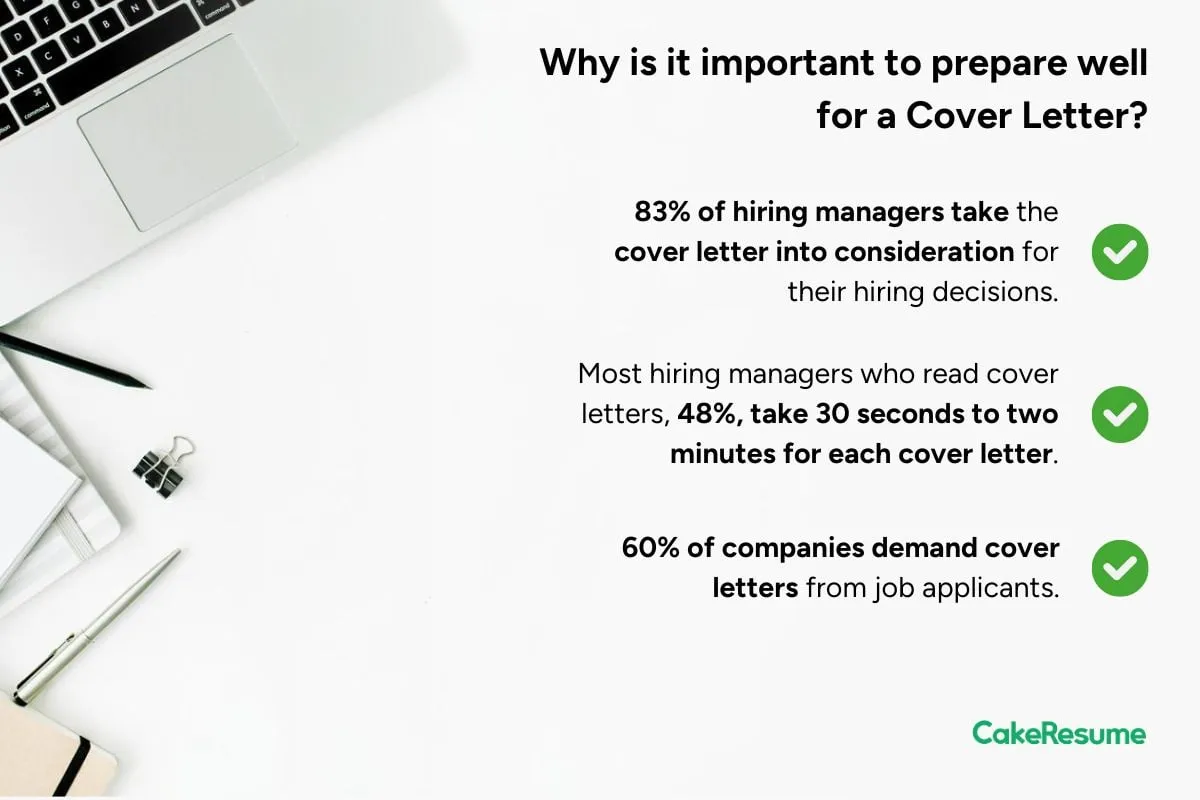
If you’re truly unable to find a name, using a generic greeting can be acceptable, but it’s best to use it as a last resort. Instead of ‘To Whom It May Concern’, consider greetings like ‘Dear Hiring Manager’ or ‘Dear [Department Name] Team’. These options are more professional and show you’re addressing the relevant individuals. It’s important to avoid sounding too impersonal, and these greetings provide a more personal touch. You can still make the letter stand out even with a generic greeting by tailoring the content to the specific job description and company culture.
Addressing to the Hiring Manager
Addressing your cover letter to ‘Dear Hiring Manager’ is often a safe and effective alternative. This shows that you recognize the individual responsible for the hiring process. Ensure you research the company and use their specific titles or departments. If a specific department is listed in the job description, such as the ‘Marketing Department’, you can use ‘Dear Marketing Team’. This approach still demonstrates your awareness of the company’s structure. This is a much better alternative than ‘To Whom It May Concern’ and is a common and accepted practice.
Addressing by Department
Another approach is to address your letter to the specific department. For instance, if you’re applying for a role in the marketing department, you can use ‘Dear Marketing Team’ or ‘Dear Marketing Department Hiring Manager’. This is a good option, especially if the job description specifies a particular team or department. It shows that you understand where you fit within the organization. This targeted approach can make your letter feel more personal, even without a specific name. This shows that you’re familiar with the company’s structure and job roles.
Researching to Find a Name

Before resorting to generic greetings, make every effort to find the name of the hiring manager or the person responsible for reviewing applications. A bit of research can go a long way. Use the company’s website, LinkedIn, and other resources to find the appropriate contact. Make sure you are putting the time and effort into your application, this shows that you care about the role and want to succeed. Even if you can’t find the hiring manager’s name, you can often find other relevant details about the company’s culture and values. This information can inform your cover letter and allow you to highlight the aspects that are most relevant to the specific role and company.
Using LinkedIn to Find a Contact
LinkedIn is an invaluable resource for finding the names of hiring managers or HR personnel. Search for the company on LinkedIn and look for individuals in HR or the specific department you’re applying to. Often, you can identify the person responsible for recruiting or reviewing applications for the role you’re interested in. Once you find a potential contact, review their profile to learn more about their background and experience. This information can help you personalize your cover letter even further. Be sure to tailor your approach to reflect the company’s culture and values as outlined on their LinkedIn page.
Checking the Company Website
The company website can be another great source of information. Explore the ‘About Us’ or ‘Contact Us’ sections to find details about the team or department you’re applying to. Sometimes, the website will list key personnel or provide contact information for specific departments. You may even find the name of the hiring manager mentioned on the job posting itself. Check the ‘careers’ page of the company website; this is where they often provide information about their hiring practices and personnel. You can also find additional information about the company’s culture and values, allowing you to craft a more compelling cover letter.
Contacting the Company Directly
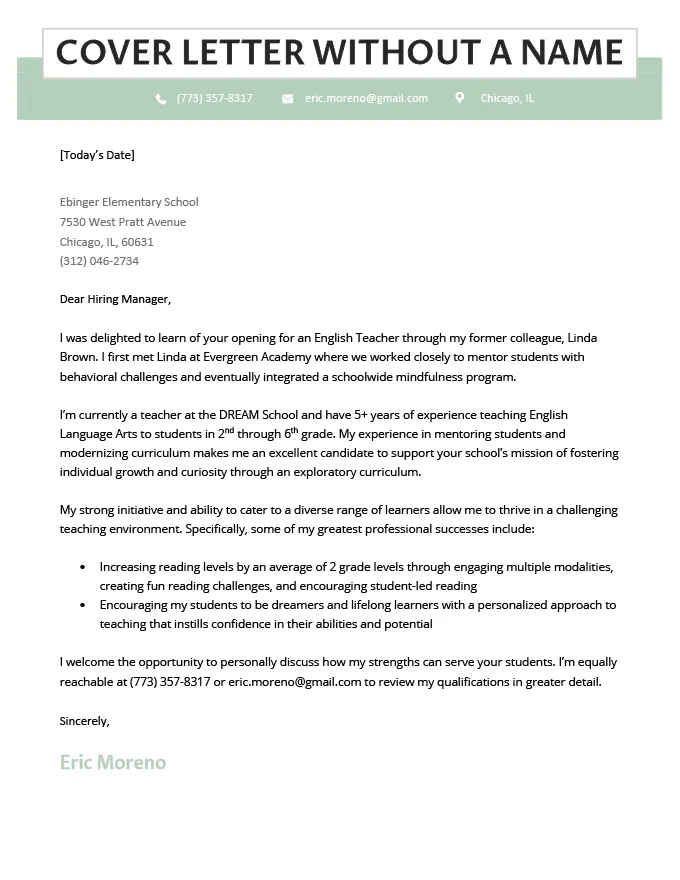
If you’ve exhausted all other options, consider contacting the company directly. You can call the general number and politely ask for the name of the hiring manager for the specific role. Alternatively, you can send a brief email to the HR department or the contact listed on the job posting. Keep your message concise and professional, and explain that you’re preparing your application and would like to address your cover letter correctly. Make sure you are polite and professional in your approach. This shows initiative and a genuine desire to connect with the company, and you might even make a positive impression before you apply.
Formatting the Cover Letter
Regardless of whether you know the hiring manager’s name, the overall formatting of your cover letter is crucial. A well-formatted letter is easier to read and makes a more professional impression. Make sure your formatting is consistent throughout the letter, and it should follow standard business letter conventions. Pay attention to the font, spacing, and margins to ensure your letter is visually appealing and easy to read. Good formatting can enhance the readability of your cover letter, increasing the likelihood that your message will be received and understood.
Proper Salutations
As mentioned, your salutation sets the tone for your letter. If you have the name of the hiring manager, use ‘Dear Mr./Ms./Mx. [Last Name]’. If you don’t know the name, use alternatives like ‘Dear Hiring Manager’ or ‘Dear [Department Name] Team’. Always ensure that your salutation aligns with the tone and style of the company. Avoid informal greetings, such as ‘Hello’, as they can appear unprofessional. Be sure to proofread your salutation to avoid typos or grammatical errors, as this is the first thing the reader will see.
Body of the Cover Letter
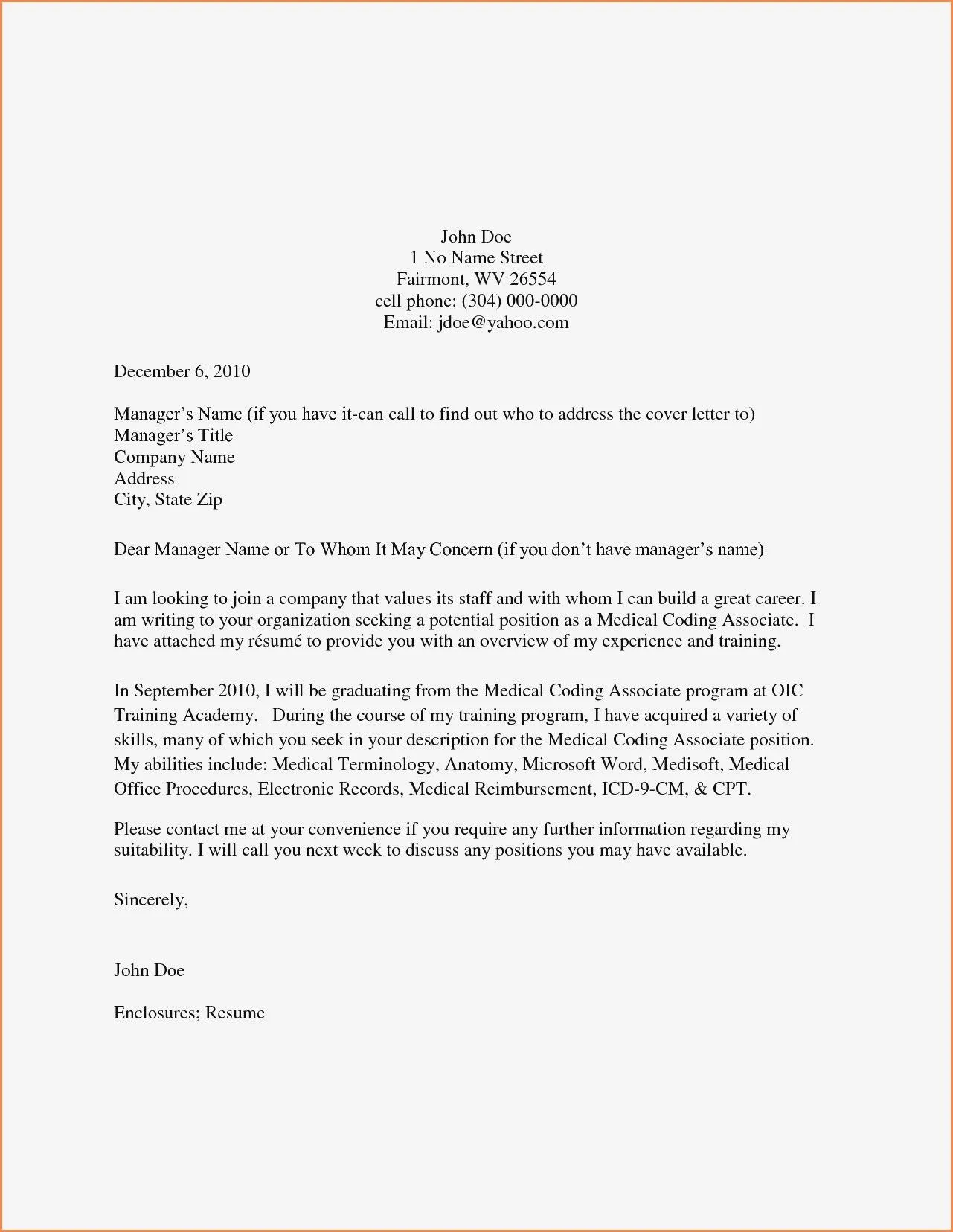
The body of your cover letter should be concise, engaging, and tailored to the specific role and company. Start with a strong opening paragraph that immediately captures the reader’s attention. Then, highlight your relevant skills and experiences and demonstrate how they align with the job requirements. Make sure your cover letter stands out by showcasing your knowledge and accomplishments. Use specific examples to illustrate your points and quantify your achievements whenever possible. Keep the tone professional and enthusiastic, emphasizing your passion for the role and the company. Use clear, concise language, and avoid jargon or overly complex sentences.
Closing the Cover Letter
Your closing paragraph should reiterate your interest in the role and thank the reader for their time and consideration. Include a call to action, such as stating that you look forward to hearing from them soon or are available for an interview. Keep the closing concise and professional. Use a formal closing such as ‘Sincerely’ or ‘Best regards’ followed by your typed name. Before submitting, always proofread your entire cover letter, including the closing, for any errors or typos. It is your final opportunity to make a good impression, and make sure you express enthusiasm for the role and company.
Making a Positive Impression
Even when you don’t know the hiring manager’s name, you can still make a positive impression. Focus on showcasing your skills, demonstrating enthusiasm, and thoroughly proofreading your letter. Your goal is to make your cover letter stand out, even without knowing the hiring manager’s name. The content of your cover letter can more than compensate for the lack of a name. Show that you are an ideal candidate by highlighting relevant skills and accomplishments. Also, demonstrate your understanding of the company and enthusiasm for the role.
Highlighting Your Skills and Experience
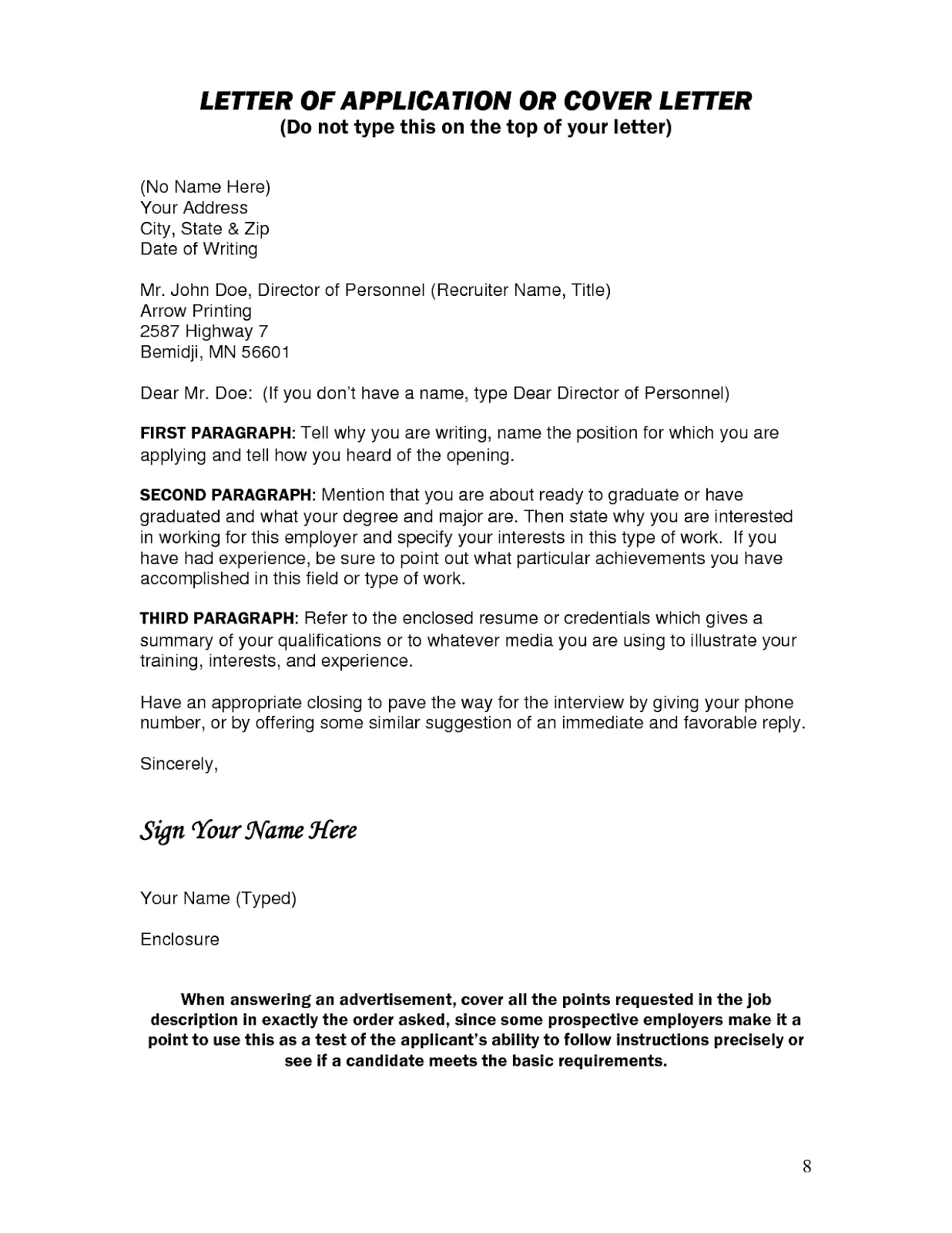
Your cover letter is an opportunity to showcase your skills and experience and how they align with the job requirements. Use specific examples to illustrate your accomplishments. Use keywords from the job description to demonstrate that you understand the role. Be sure to highlight any relevant skills and experiences mentioned in the job posting. Tailor your examples to the company and industry. The better you match the job description, the higher the chance you will be called for an interview. Quantify your achievements whenever possible to make your impact more clear.
Demonstrating Enthusiasm for the Role
Expressing enthusiasm for the role and the company is important. Show that you’ve researched the company and understand its mission, values, and goals. Explain why you are interested in the specific role. Showcase your passion for the industry. Show your enthusiasm by highlighting specific projects or initiatives that you admire. The more your genuine interest shows, the more likely you are to catch the hiring manager’s attention. This is your chance to demonstrate that you see yourself as more than just a candidate; you see yourself as a potential asset to the team.
Proofreading and Editing Your Cover Letter
Before submitting your cover letter, meticulously proofread and edit it. Ensure that your letter is free of typos, grammatical errors, and formatting inconsistencies. Errors can create a negative impression, regardless of the effort you’ve put into other aspects of the letter. Proofread your cover letter multiple times, and ask a friend or family member to review it. Make sure you read it from start to finish. Pay attention to every detail, including the salutation, body paragraphs, and closing. A polished, error-free cover letter shows attention to detail and demonstrates professionalism. This is the last opportunity to give the hiring manager a positive impression.
In conclusion, while it’s always preferable to address your cover letter to a specific person, there are effective strategies for navigating situations when the name is unknown. By researching, using appropriate greetings, and focusing on showcasing your skills and enthusiasm, you can still make a positive impression. Remember to tailor your cover letter to each job application and ensure that it’s well-formatted and free of errors. By following these guidelines, you’ll increase your chances of getting noticed, even without knowing the hiring manager’s name.
